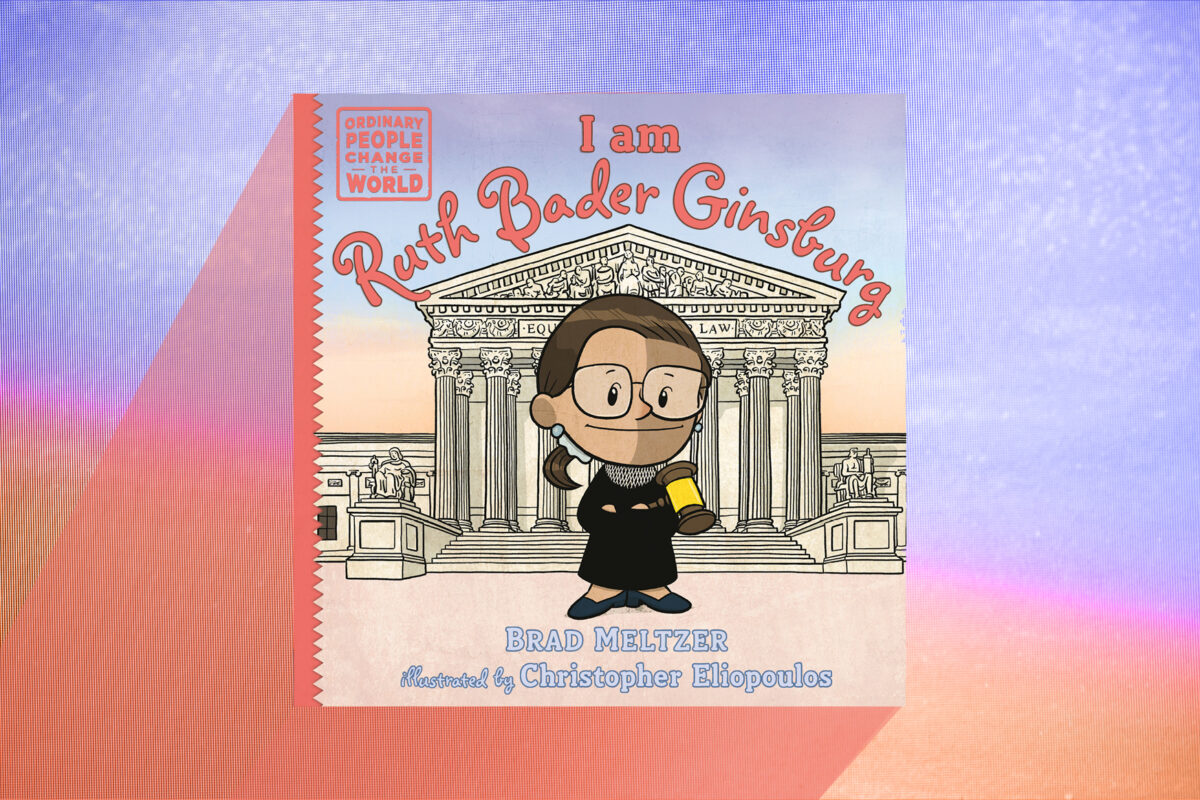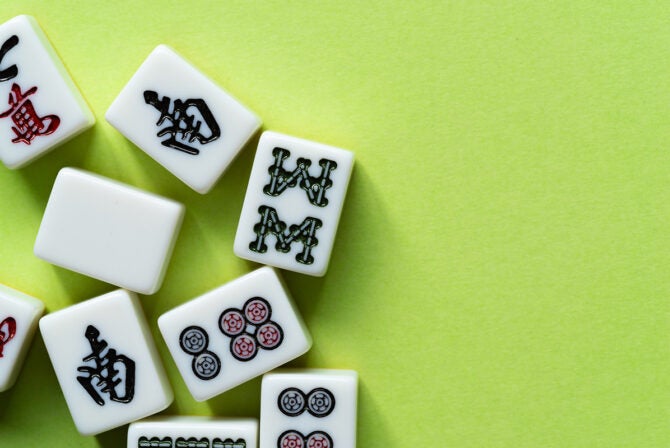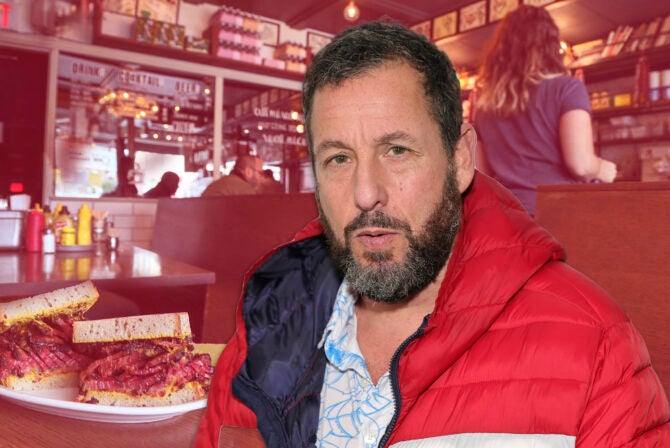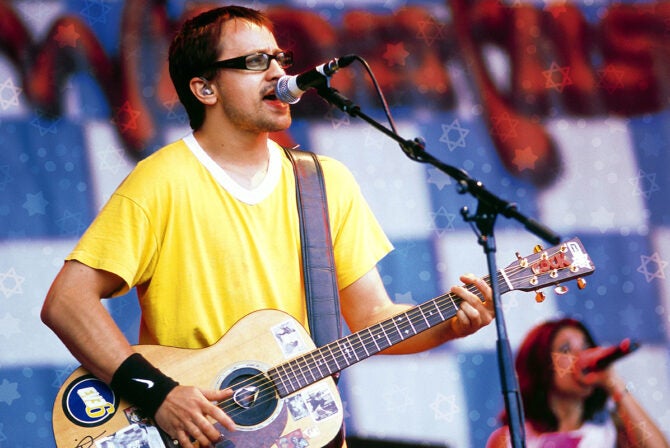History is always alive in Brad Meltzer’s world.
Aside from writing excellent thrillers, Meltzer is famous for creating the series “Ordinary People Change the World” which, in 2019, was turned into the PBS show “Xavier Riddle and the Secret Museum.” Along with his gifted collaborator, the cartoonist Chris Eliopoulos, he portrays iconic historical figures like Rosa Parks and Anne Frank in technicolor. In his books, stories reserved for serious tomes are full of heart, vibrancy and humor. In a world that still often devalues the experience of kids, he reminds our children that every person who has ever changed the world was once a child, and that their early experiences were integral to the people they later became.
Now, Meltzer is bringing that same wonder to a figure we all care so much about. We’re excited to exclusively reveal (and kvell about!) the cover of Meltzer’s newest book in the now 9-year-old series, which will be his most Jewish and personal yet: “I Am Ruth Bader Ginsburg.” The cover shows an adorable young Ginsburg with her famous lace jabot and gavel on the background of the Supreme Court — looking like the sassy Jewish heroine all our kids need.
The book, which comes out on February 6, 2024, will be the first “Ordinary People” book about a subject Meltzer has actually met before writing the series. Reading an early copy of it made me cry — and talking to Meltzer, who was connected to the late Supreme Court Justice through a chain of amazing Jewish women — made me tear up all over.
Kveller talked to Meltzer about how fresh the grief over RBG still feels, why he felt like it was the right time to finally include the Jewish justice in his bestselling series, and about bringing Jewish representation to PBS.
This interview has been edited and condensed for clarity.
How long has this book been in the works, and what made you feel like it was finally the right time to tell RBG’s story?
This is the first hero we’ve done who I knew before we did the series. I’ve been able to meet Jane Goodall and Billie Jean King and so many of the heroes because we did the series, but I met RBG multiple times over the years.
I met her in law school because her daughter was one of my mentors. One of my best friends from law school became one of her first clerks [in 1998 and 1999] and Justice Ginsburg and I were the witnesses at her wedding. We signed her ketubah together.
After I graduated law school, there was a giant 150th birthday party at Columbia Law School and they asked me and Ruth Bader Ginsburg to speak. I was like, I think you’ve made a typo here!
As to why now, the truth is, I can’t even explain to you why, it just seems right. She was always on the list from when we started the series. I really do believe that the world tells us what books we need and what heroes we need to feature. I knew that the main question of this book was to teach my daughter and my son: How do you create change? The world is begging for that question to be answered for our kids, so there was no one better to answer that, to me, than Justice Ginsburg.
Her Jewish identity is a big part of this book. Why did you feel like that was important to include?
When we did “I Am Albert Einstein,” we didn’t include it at all, because it just didn’t feel like part of the story. When we did “I Am Anne Frank,” of course that became a bigger part, but oddly, even including Anne Frank, there was no one whose story, beyond, of course, the Holocaust, jumped out as being about how important Judaism was to where they got.
Watching Ruth Bader Ginsburg as a little girl — whether it’s her mother picking out Jewish leaders to teach her about, or going to the local Jewish orphanage and giving away ice cream on her birthday, or even just learning that there were people who didn’t like her just because of her religion — over and over, she learned that hatred is a destructive tear in our society and you’ve got to repair it. She was taught those lessons in Judaism as a child.
When you went into her chambers, there was the famous Torah saying, “Justice, justice, you shall pursue” — that was truly one of the few things on her wall. There are people who are Jewish and who are famous, but she’s famous because of the lessons of her Judaism. Those lessons that she brings, those lessons of justice, are taught to her by our religion. They’re why she’s famous.
As a Jewish creator, what does it mean to you to tell her story?
When I started writing these books for my kids, they were 5 and 8, and now they’re 15 and 17. When my kids were little, I wanted them to have every hero, and I still want them to have every hero. But I think, especially as my daughter’s getting older, I feel myself wanting her to see the benefits of Judaism that we forced down our kids’ throats at their bar and bat mitzvahs, because that’s their tradition.
When you unclench from having the service and throwing the party and everything else, you start to realize — you know what, there’s some beautiful stuff. These are beautiful lessons.
As a parent, I’m also at a place where my kids are much younger, but my son has been going to Jewish preschool and next year, he’s going to go to public school. I’m always thinking about how do I pass on this kind of Jewish identity and pride to him.
My answer to that is, it’s not just forcing them to learn it because they have to. What you have to do is tell your kids the best stories — and when you give them the best stories they’ll want to learn. Ruth Bader Ginsburg is one of our best stories. She’s an amazing person, but she has an incredible story. We are all living stories. When your kids see an incredible story, they just go, “Tell me more.”
I think maybe it’s because you’re catching me at that moment in time where my kids have aged a little bit more, but it just became a really important part of the book — you can see how much Judaism is in this book. It is no accident, and not because I was like, Oh, I’m Jewish, and she’s Jewish, and I’m going to put a lot of Jewish stuff in here. It’s just that that’s the vital part of her story, and I kept seeing it.
There is a line in the book, “There will be things you want to change and people might call you a complainer or a troublemaker, but when you see something that’s unjust, you need to take a stand.” As two Jewish parents who are raising young troublemakers — and I mean that in the best sense of the word — each of these books is a gift that we give to our kids. RBG is one of the greatest gifts we can give.
Speaking of the gift of stories about incredible Jewish women, I loved the “Xavier Riddle” Golda Meir episode!
Oh, yeah, no accident there. Well, listen, not only did we do Golda Meir in cartoon form, as far as I know, for the very first time, but Brad’s catchphrase on “Xavier Riddle” is “oy vey.” Whatever else I achieve in my life, I don’t think I will be happier than the fact that I made a cartoon character that’s named after me have a catchphrase that is “oy vey.”
That’s important Jewish representation.
Listen, I used to watch all those cartoons about Christmas when I was little and go, “Why is no one celebrating Hanukkah?” And you better believe there’s a “Xavier” episode where Brad teaches them how to how to play dreidel. The cartoonists who are from Canada were doing the animation — the shin was backwards. And I was like, no, no, you got it backwards. It’s the other way.
It’s important to have a Jewish person there!
100%. The funny thing is, I can write a million novels and no kid cares. But now they all know “Xavier Riddle,” and so when I go to bar mitzvahs and things like that, a little kid who didn’t care before, they look at me and they’re just like, how is it possible? Like, they know that I look like that character. They can see it.
It’s 2023. It’s been almost three years since RBG passed, but even to me, her death still feels so fresh.
Her death is still raw in this house. As I told you, one of my closest friends from law school was one of her first clerks. We were the witnesses at her wedding. My friend passed away from breast cancer [in 2015]. She’s one of the founders of Sharsheret, Rachelle Shoretz. And then Justice Ginsburg passed, and it just felt like, oh my gosh, these are two of the most powerful female voices I know on this planet, and now they’re both silent.
Her daughter, Jane, is also in the back of the book. She is the one who truly helped me become a writer. When I was at Columbia, I had no money for photocopies, and it was Jane who said let me help you. She sent my book out to agents and became a mentor to me. Their whole family has been incredibly impactful on my life.
This is the 32nd book in the series. My wife is used to reading these books. I have not seen her cry like I saw her cry reading “I Am Ruth Bader Ginsburg.” I mean she was sobbing.
Was there a particular part that she found moving?
I think the stuff about her mom hit especially strong for her. The moment where you see Ruth Bader Ginsburg sworn in in the book, the lines that she says about her mother — that she’s the reason why she is where she is, that she wished her mom could see where she was and what a mom could achieve. I didn’t write those lines. Those are the real lines she said that day.
To me, the idea of “l’dor va’dor,” or from generation to generation — when RBG was talking about other amazing Jewish women like Henrietta Szold and Emma Lazarus that inspired her — is so moving. That was where I started crying.
Yes, my wife was also crying at those moments, that whole tikkun olam section of the book. That’s the gift that Ruth Bader Ginsburg gave to us. The beautiful part of her story is that what she’s fighting for is not herself; she’s achieved everything she wants. She just wants everyone else to have what she has.
In fact, that’s the end of the book. It says they call her a trailblazer, but the best part of blazing a trail is leaving tracks, and that means you’re not just doing things for yourself, you’re leaving a path for others to follow. That is what is so exceptional about her. I said to my wife that if Ruth Bader Ginsburg was never a Supreme Court justice, she’s still worth writing a book about. I would still be doing “I Am Ruth Bader Ginsburg” even if she never made it to the Supreme Court — that’s how incredible she was.
You can preorder “I Am Ruth Bader Ginsburg” here.








